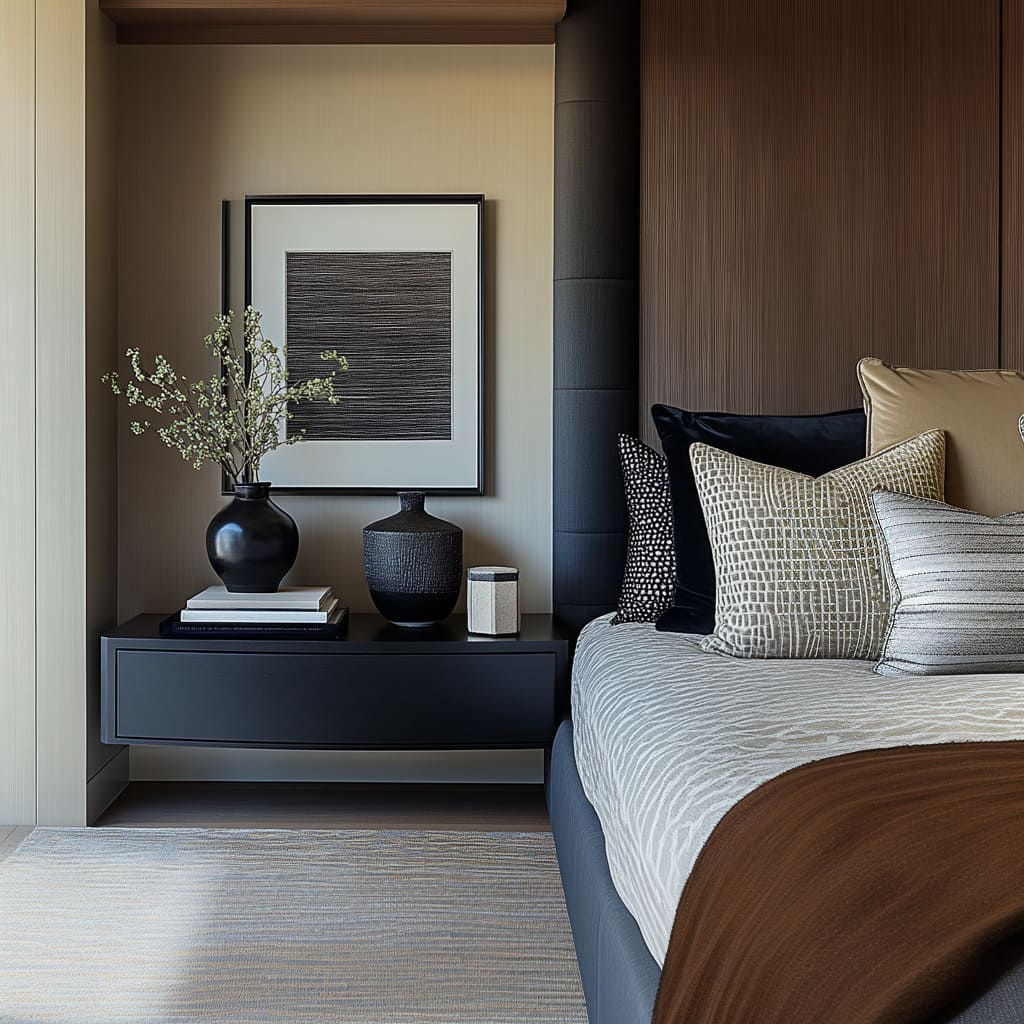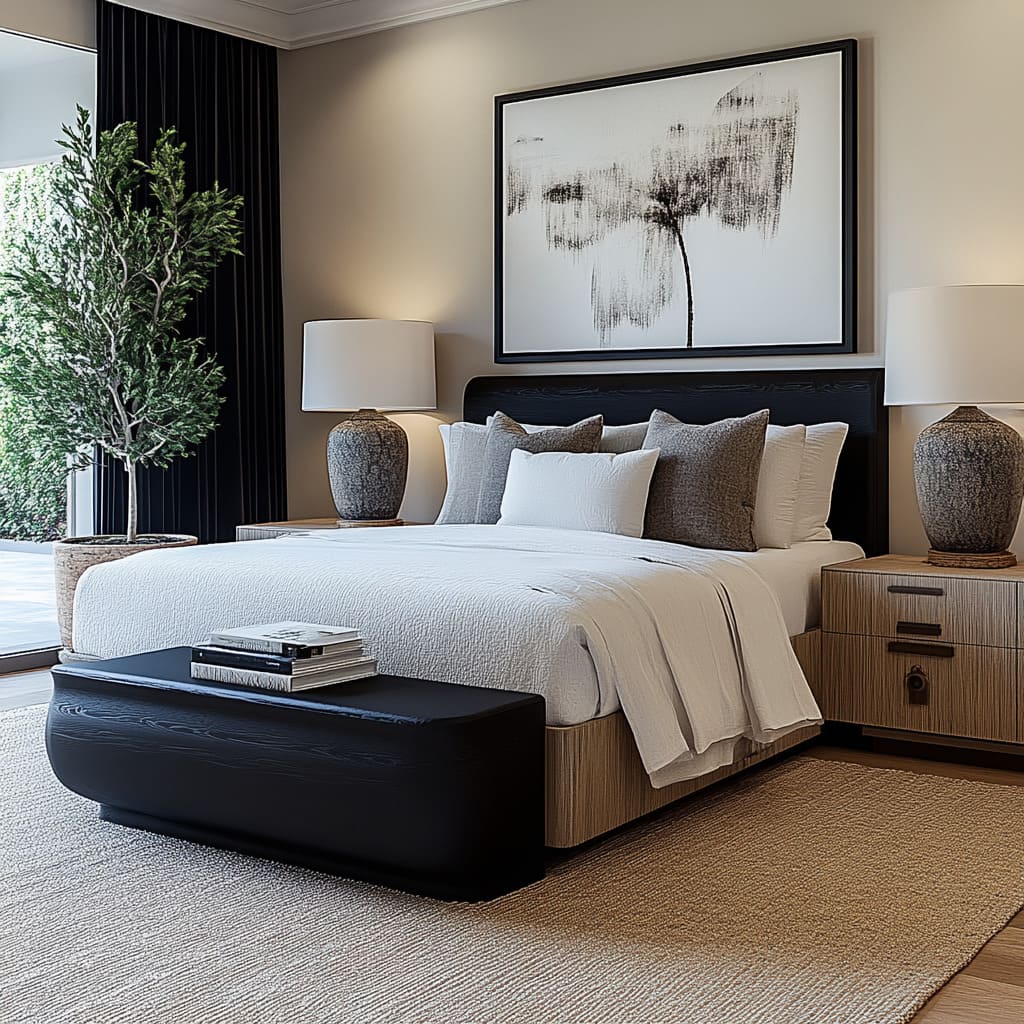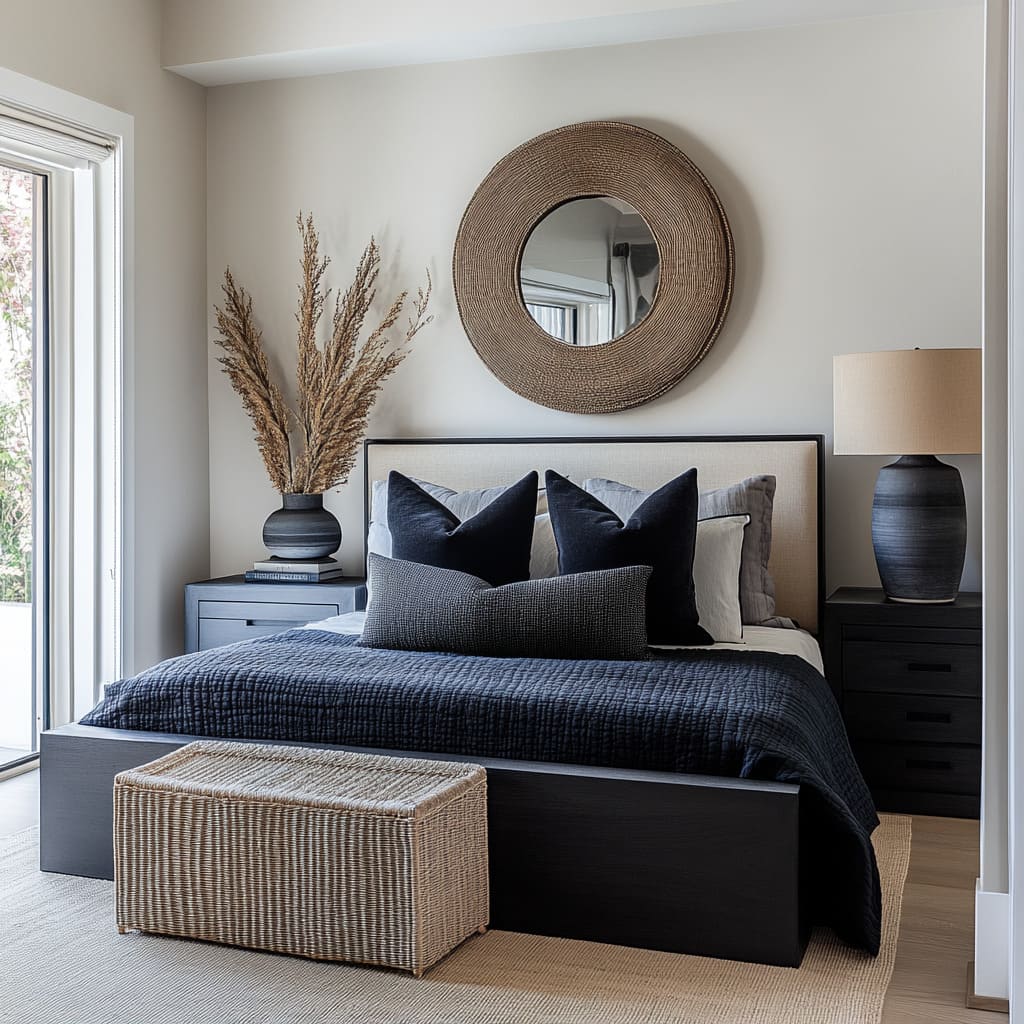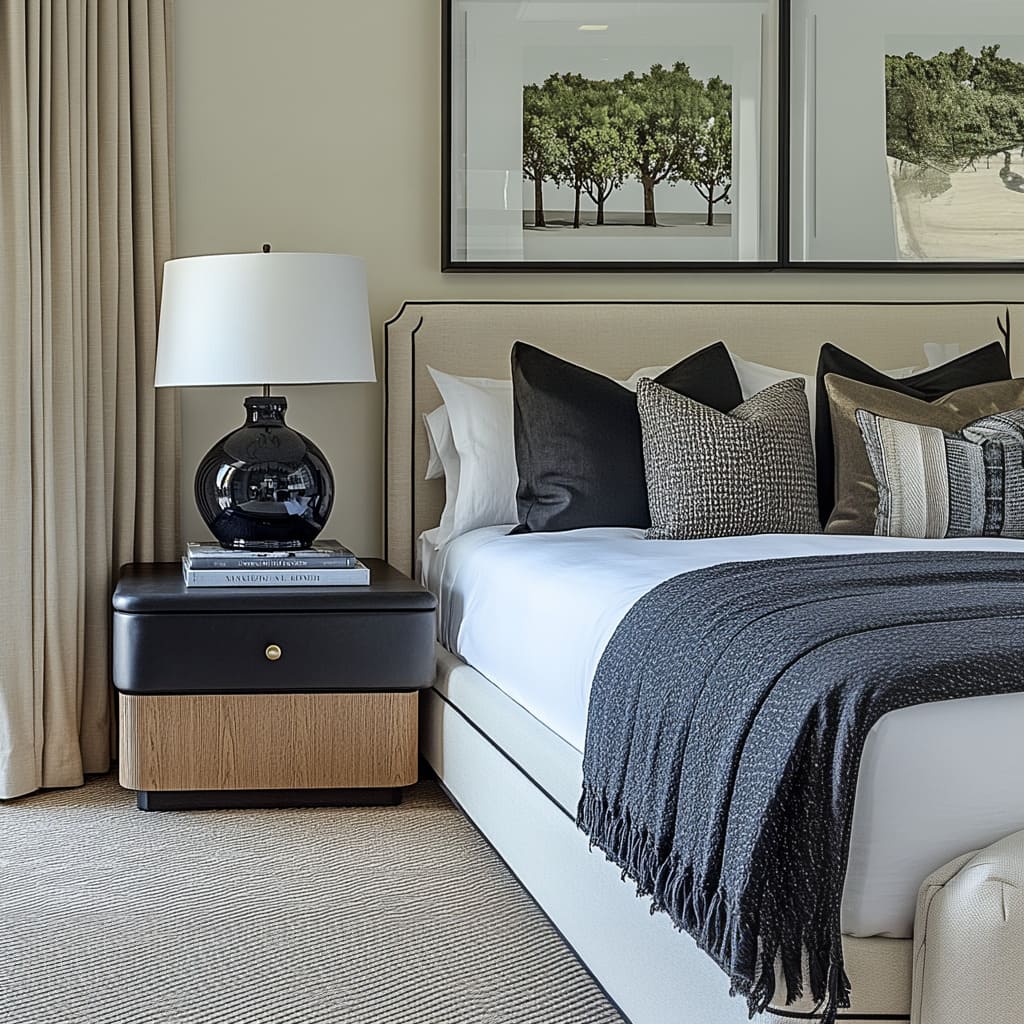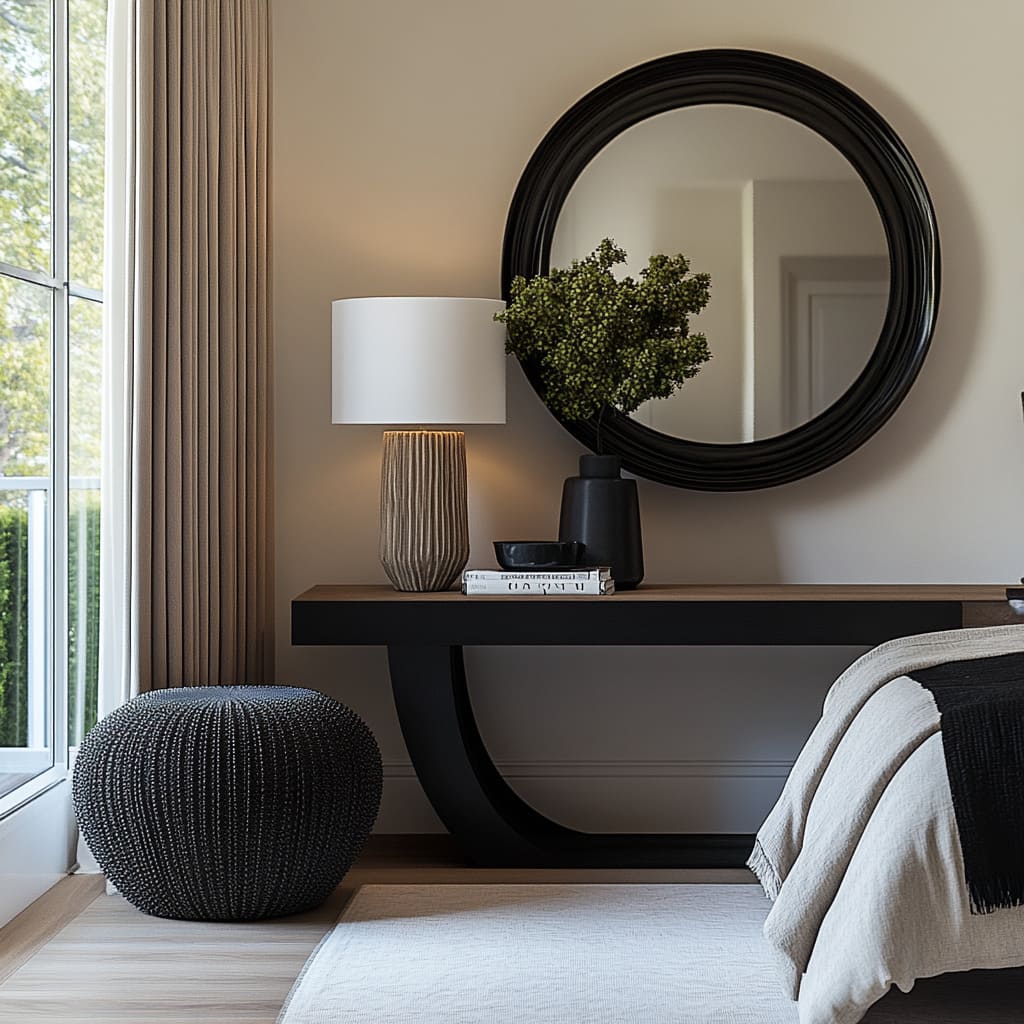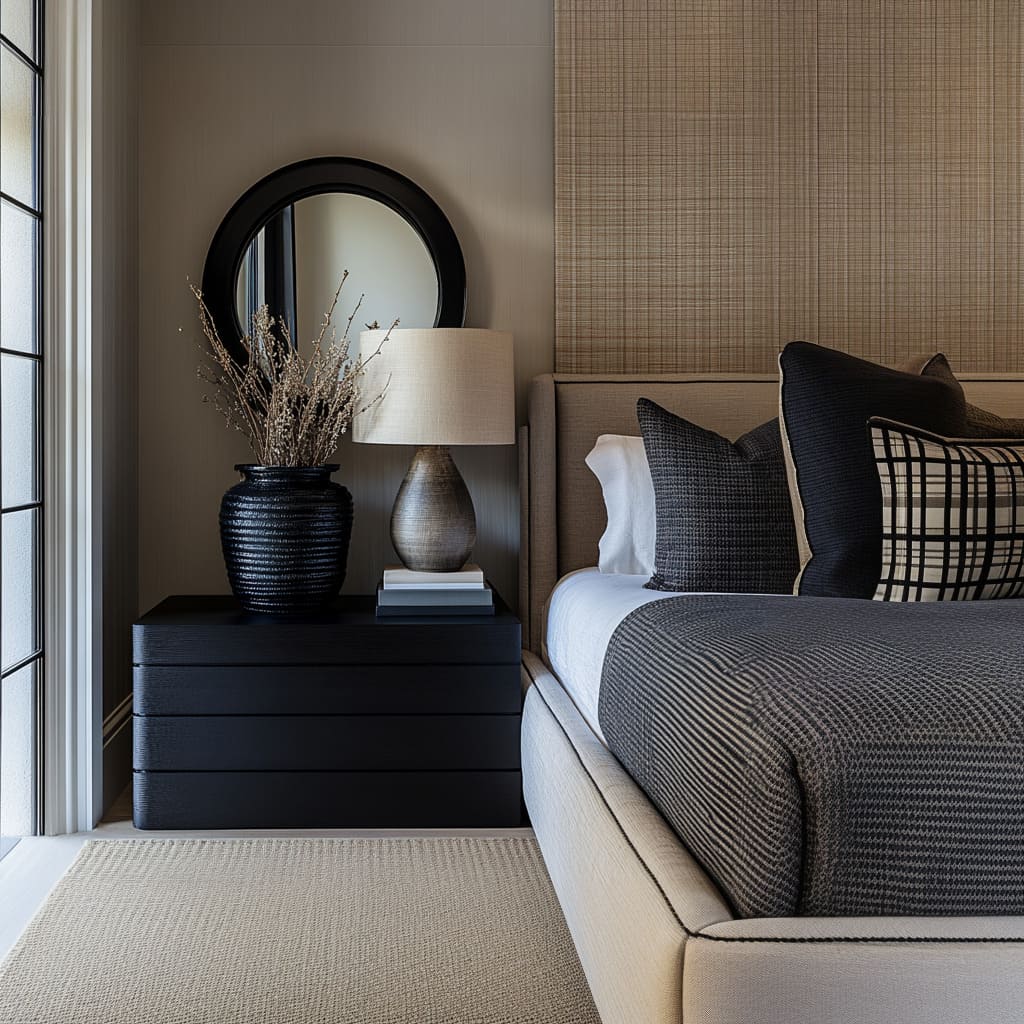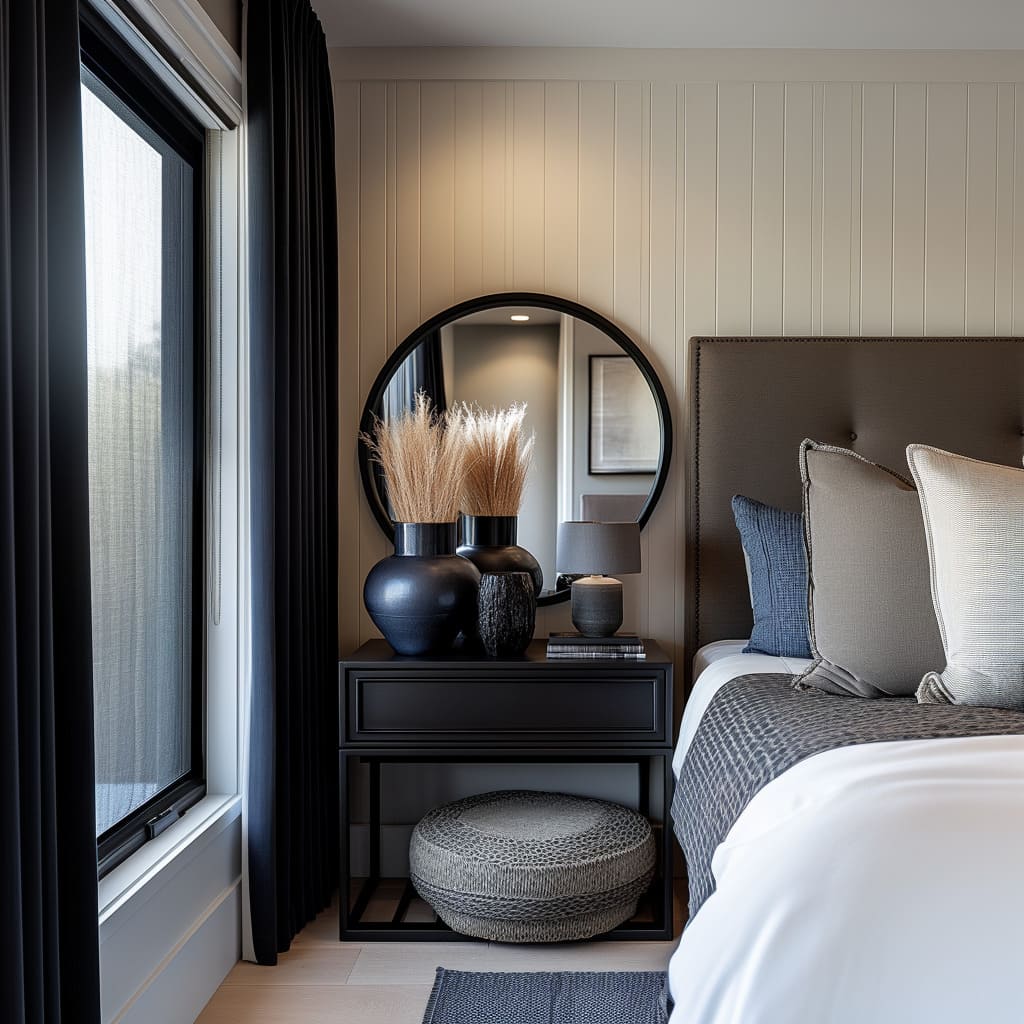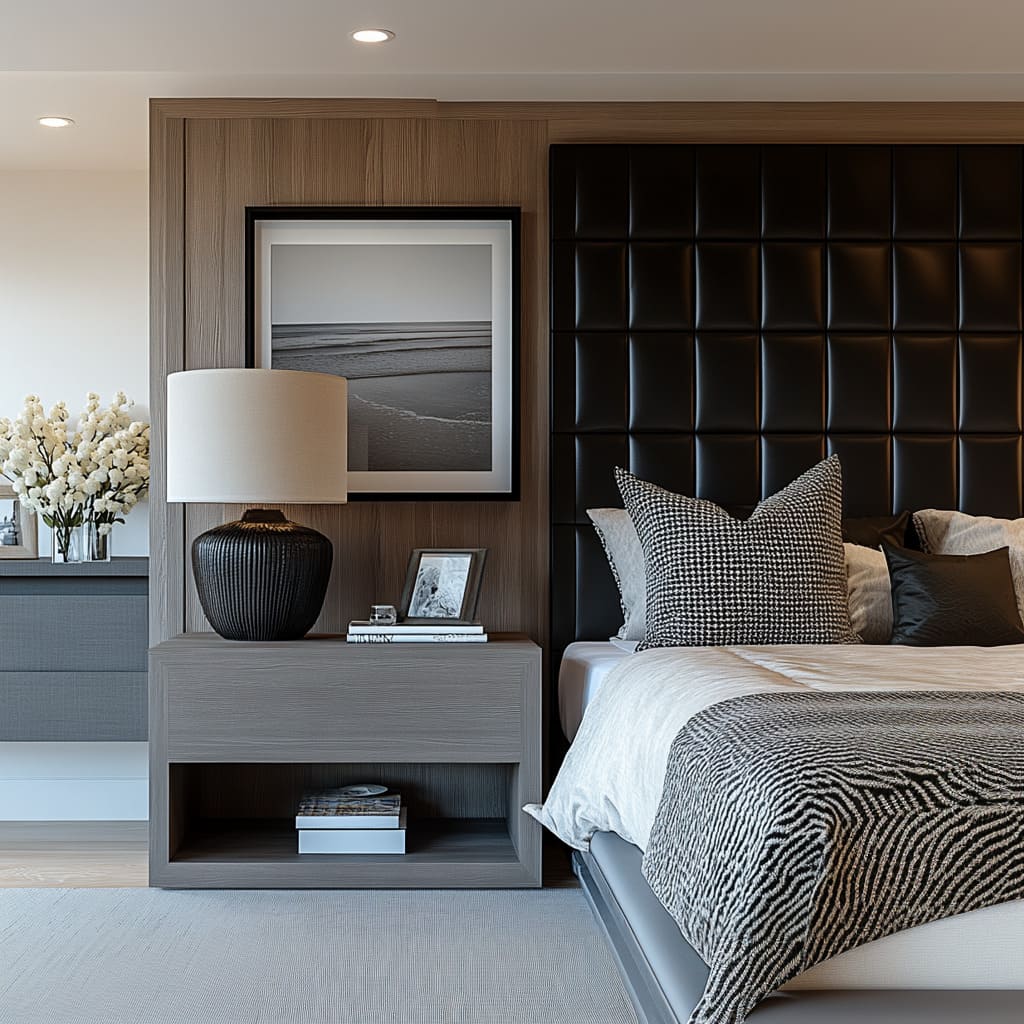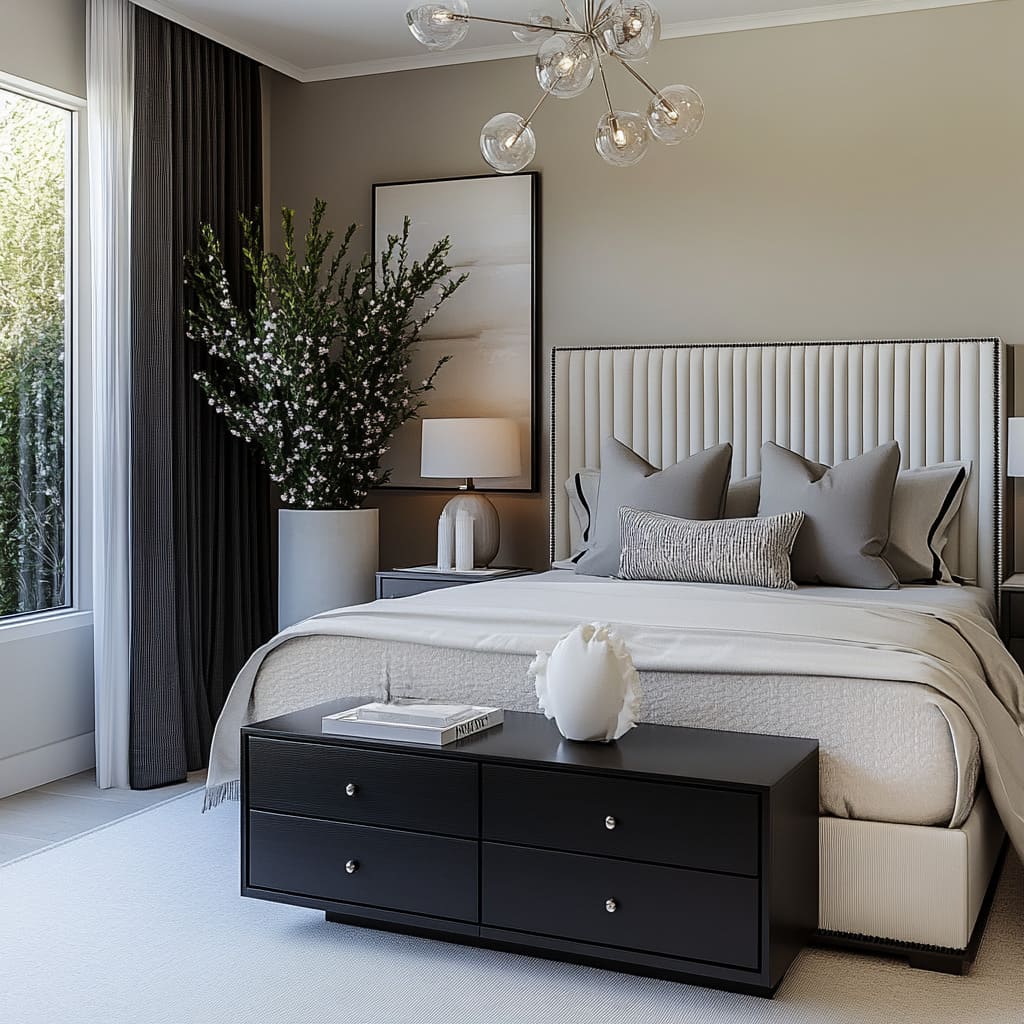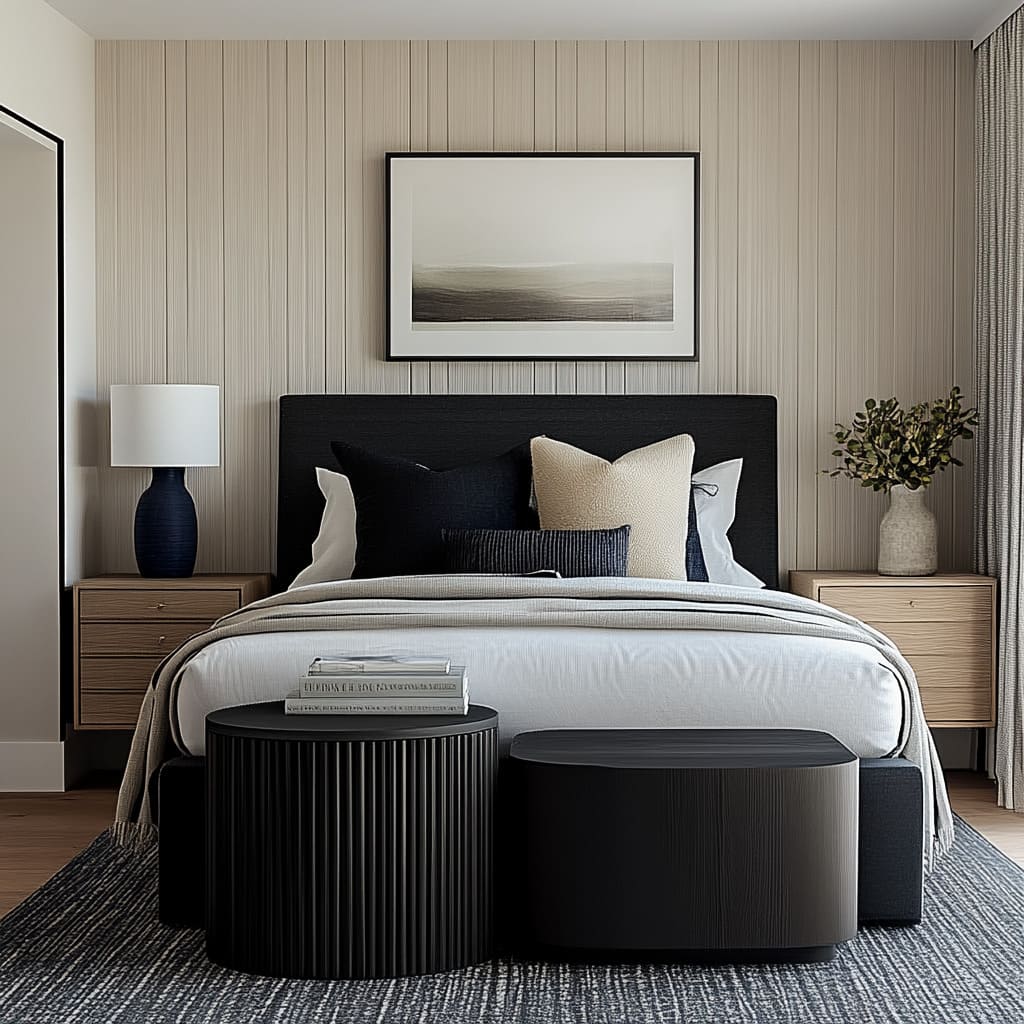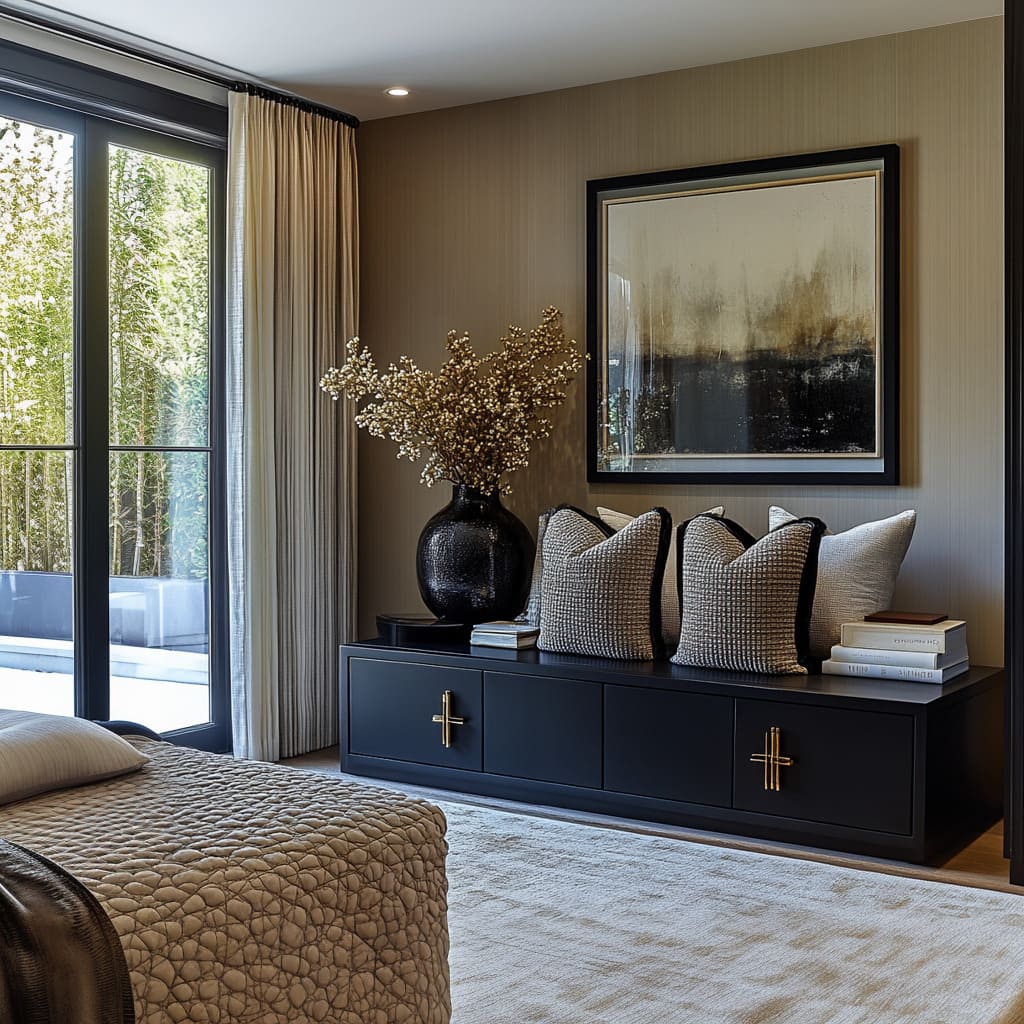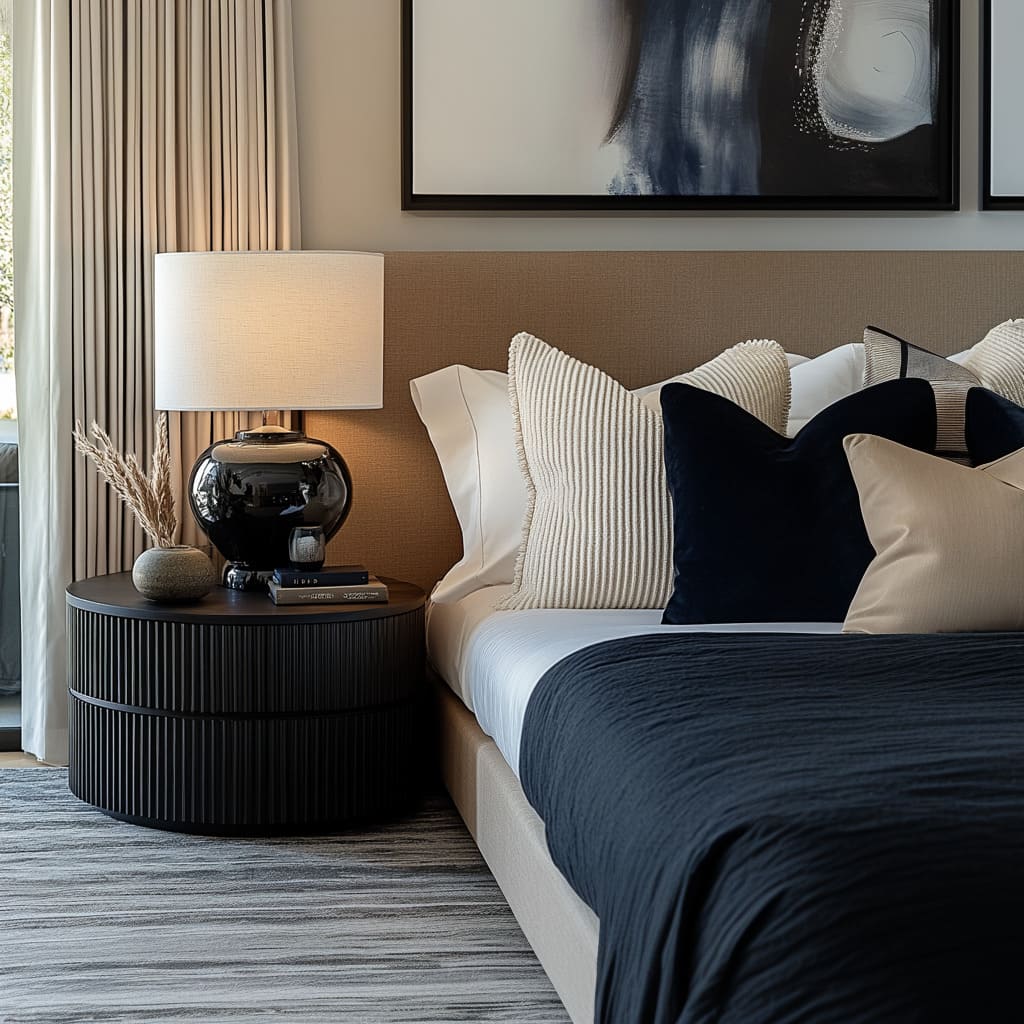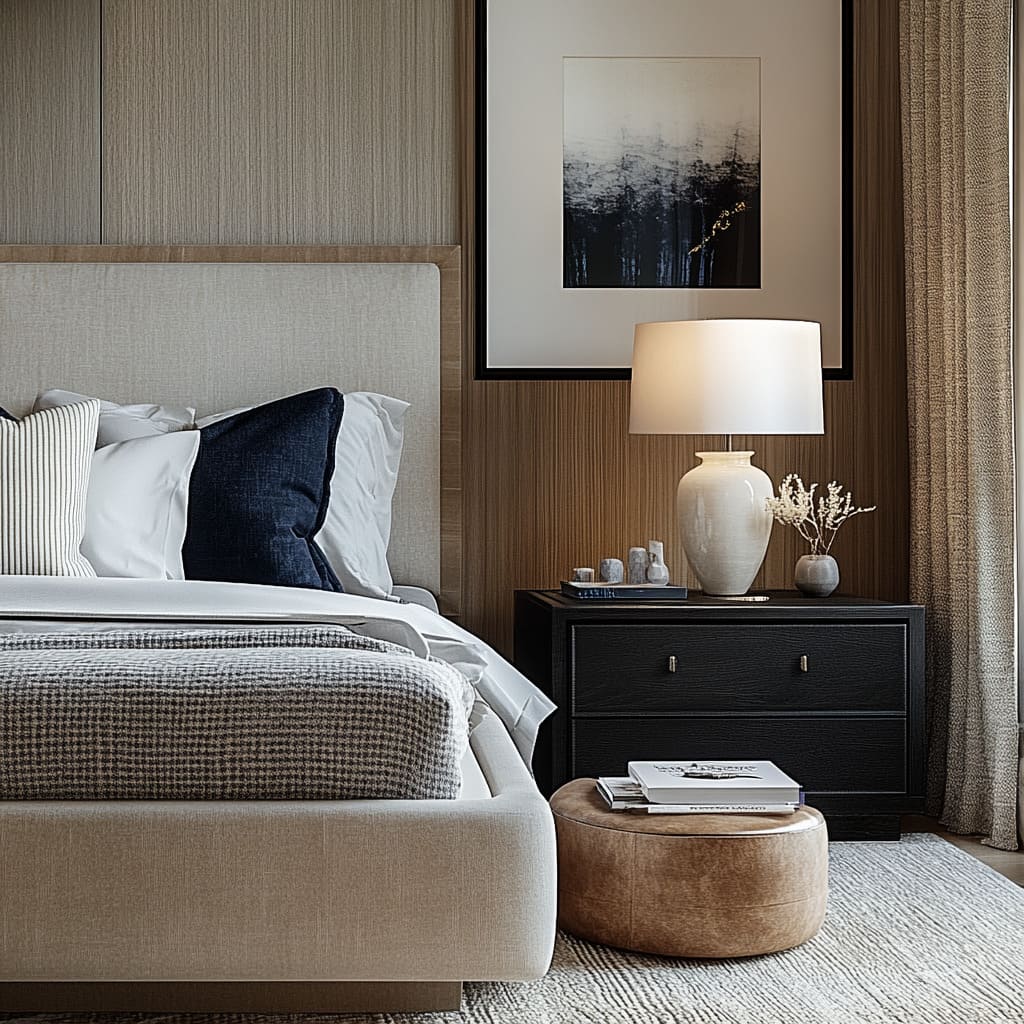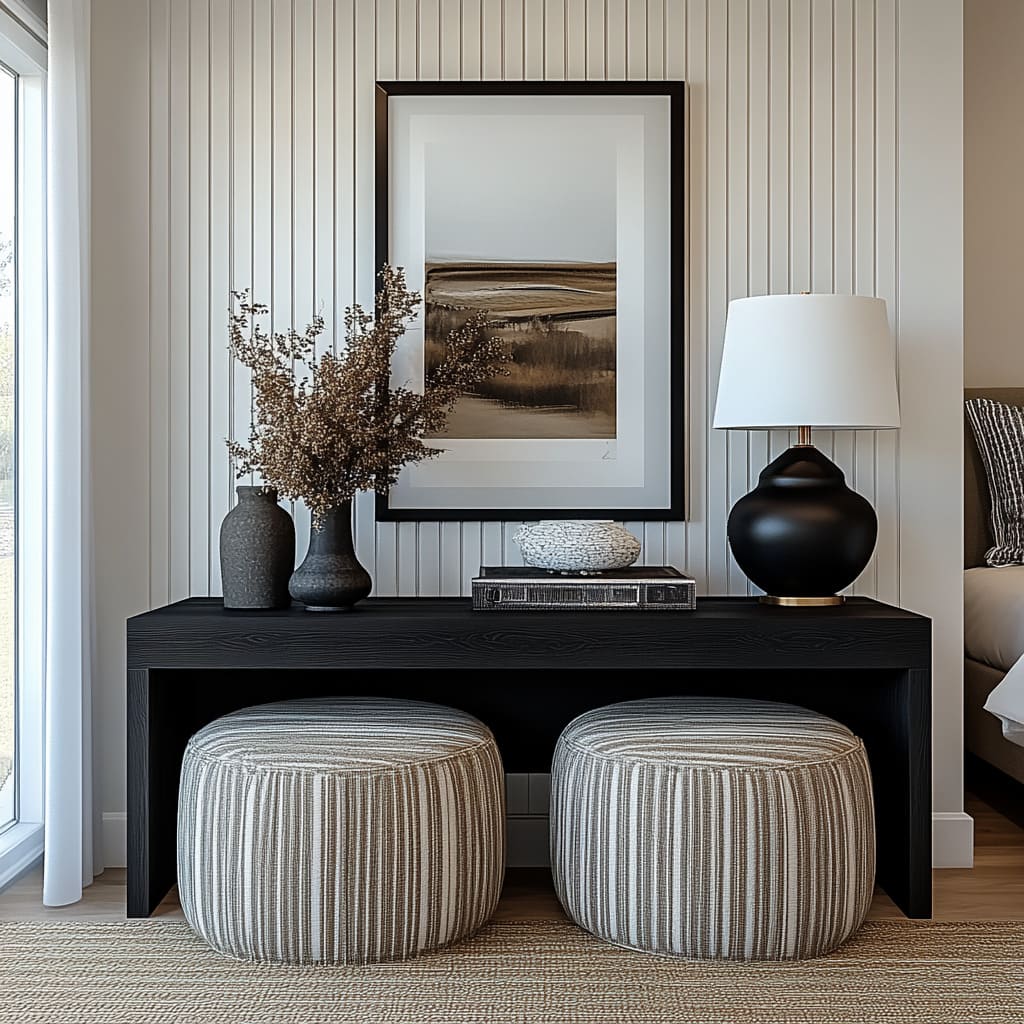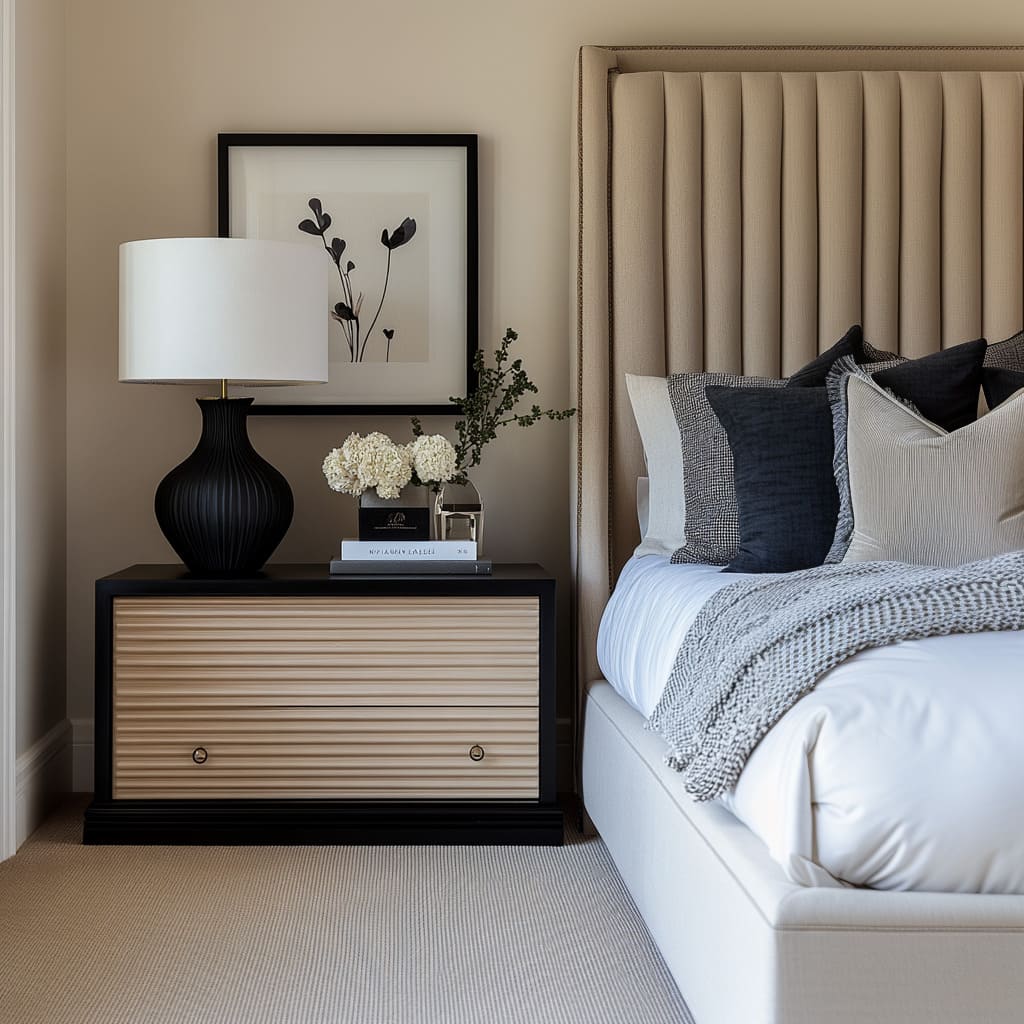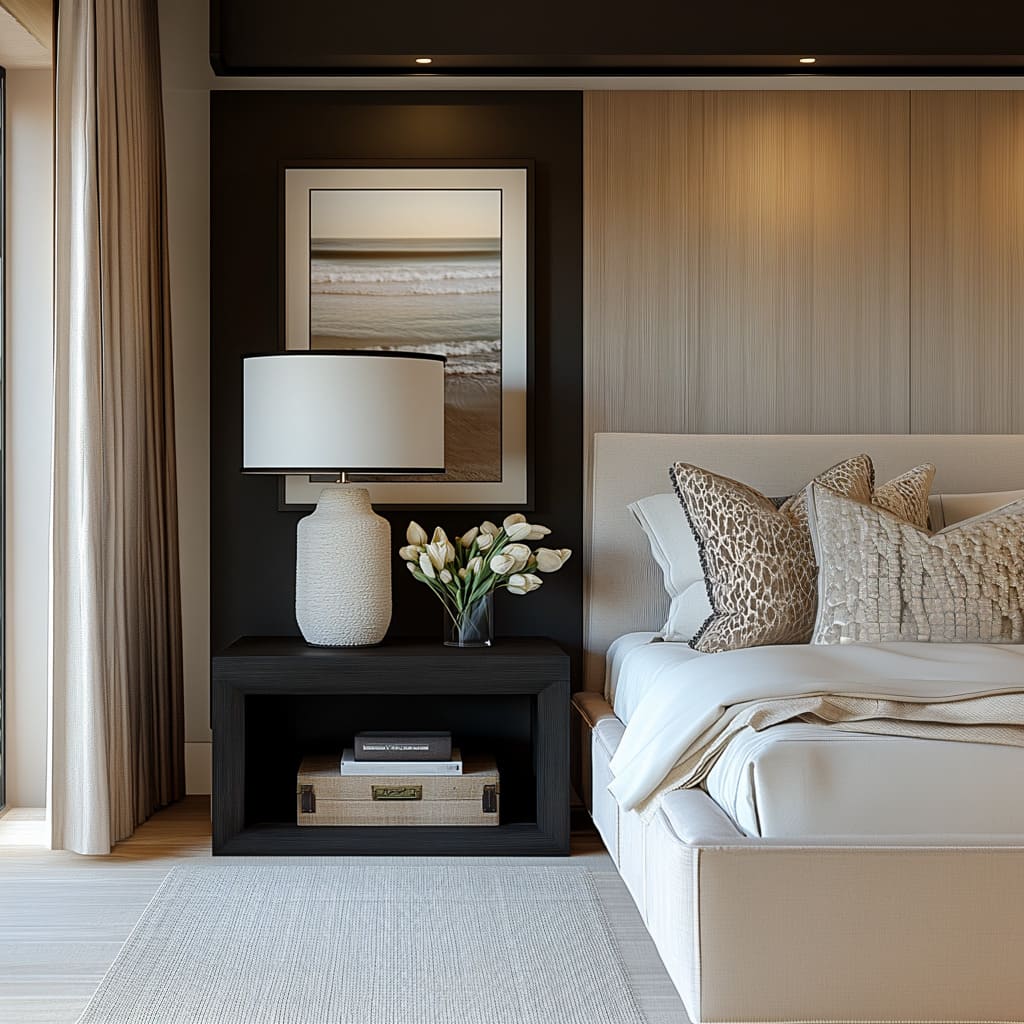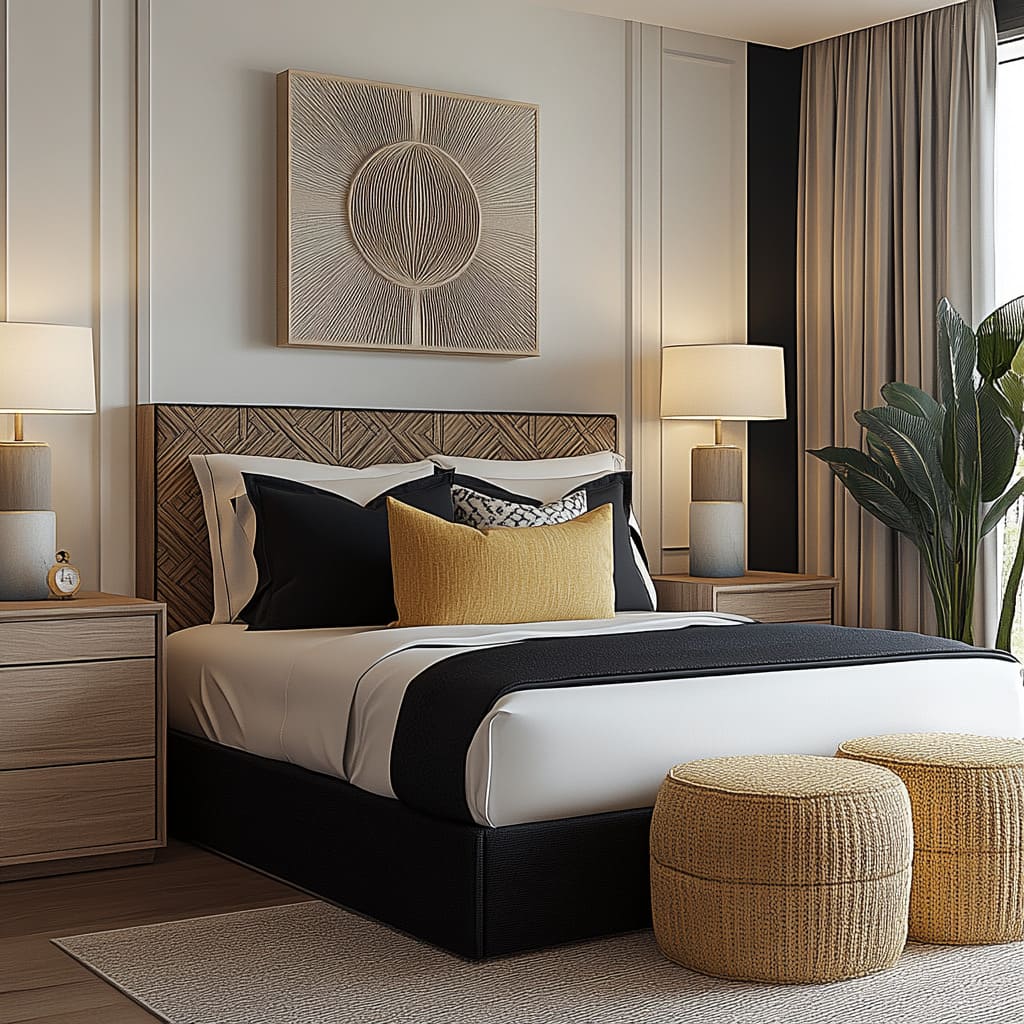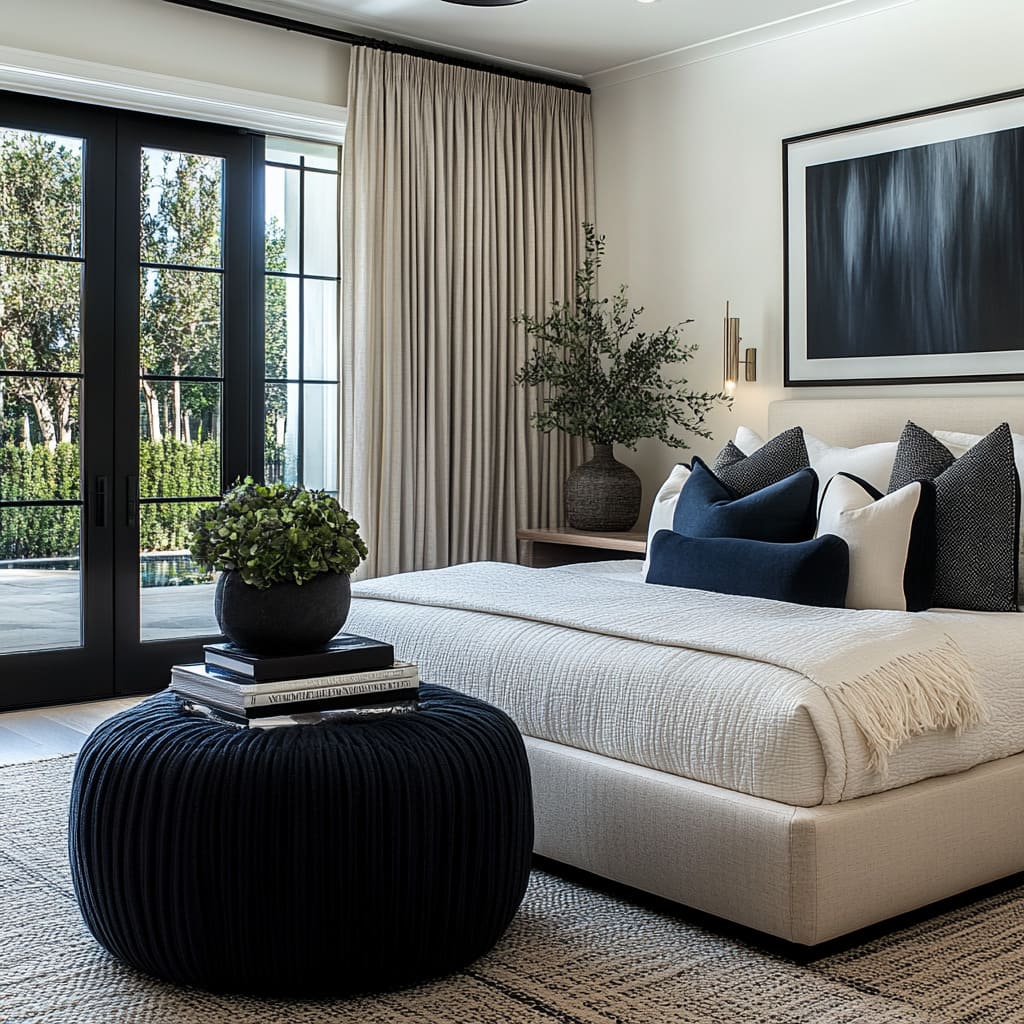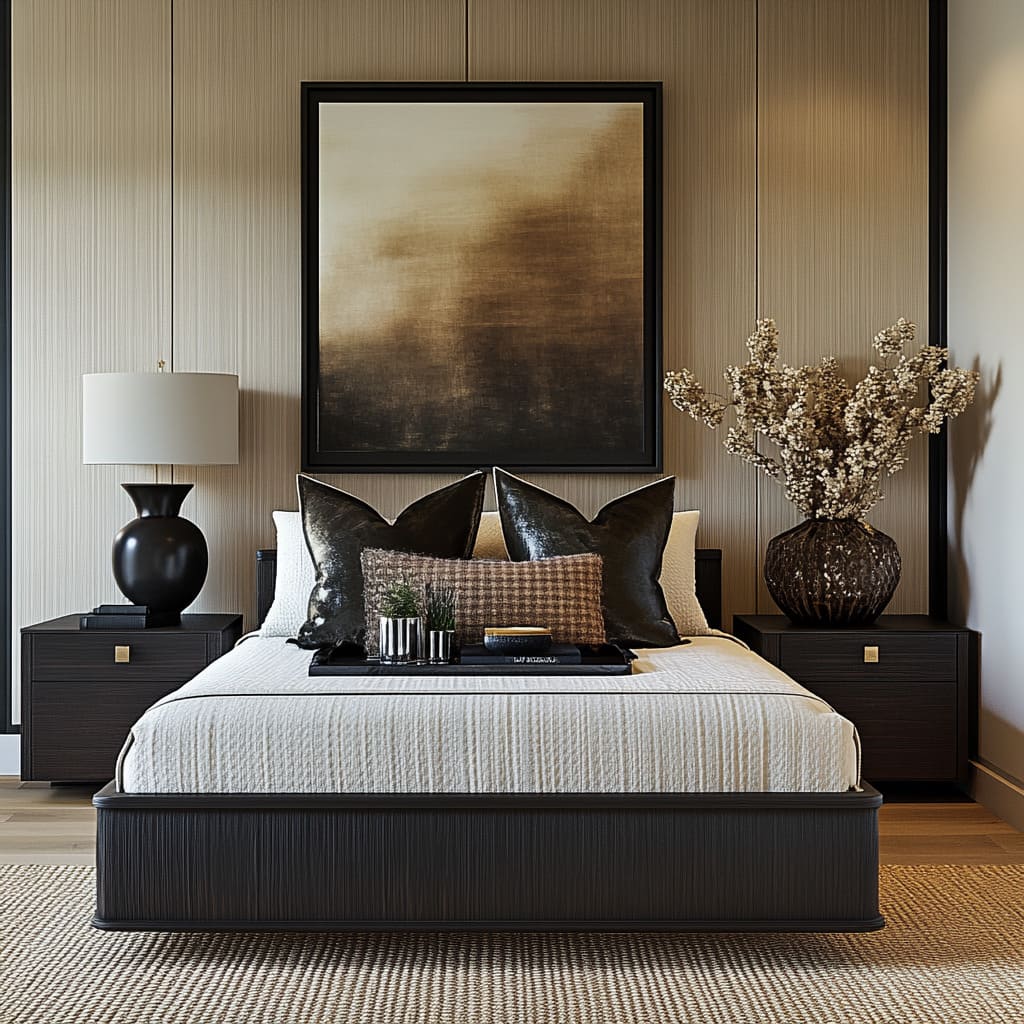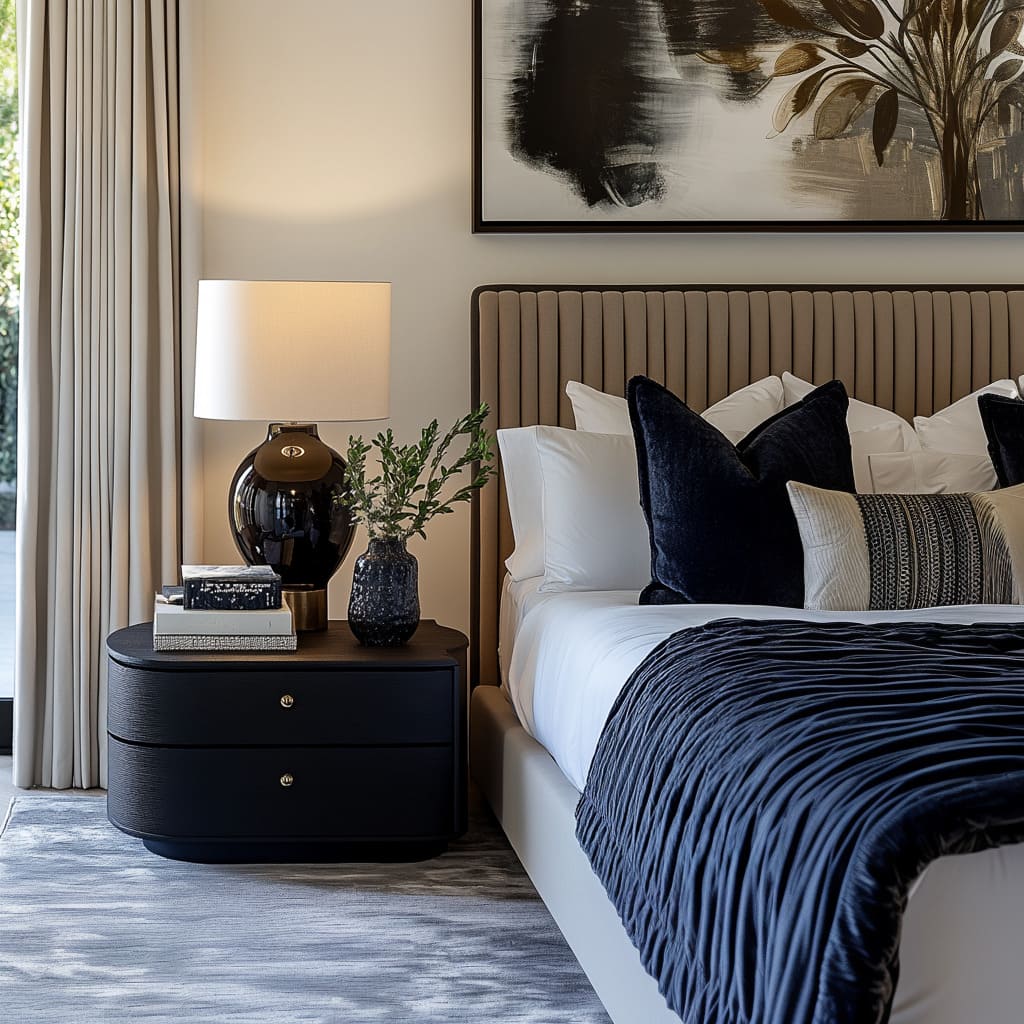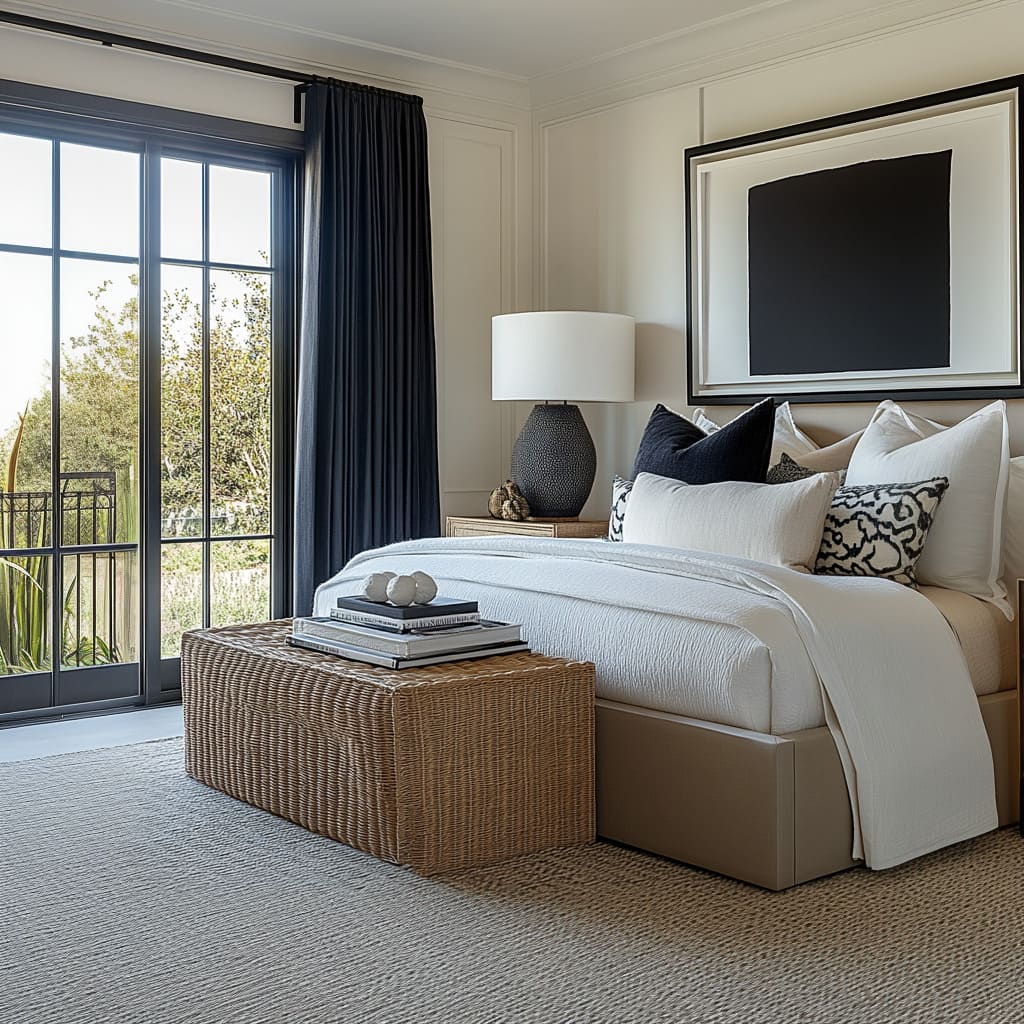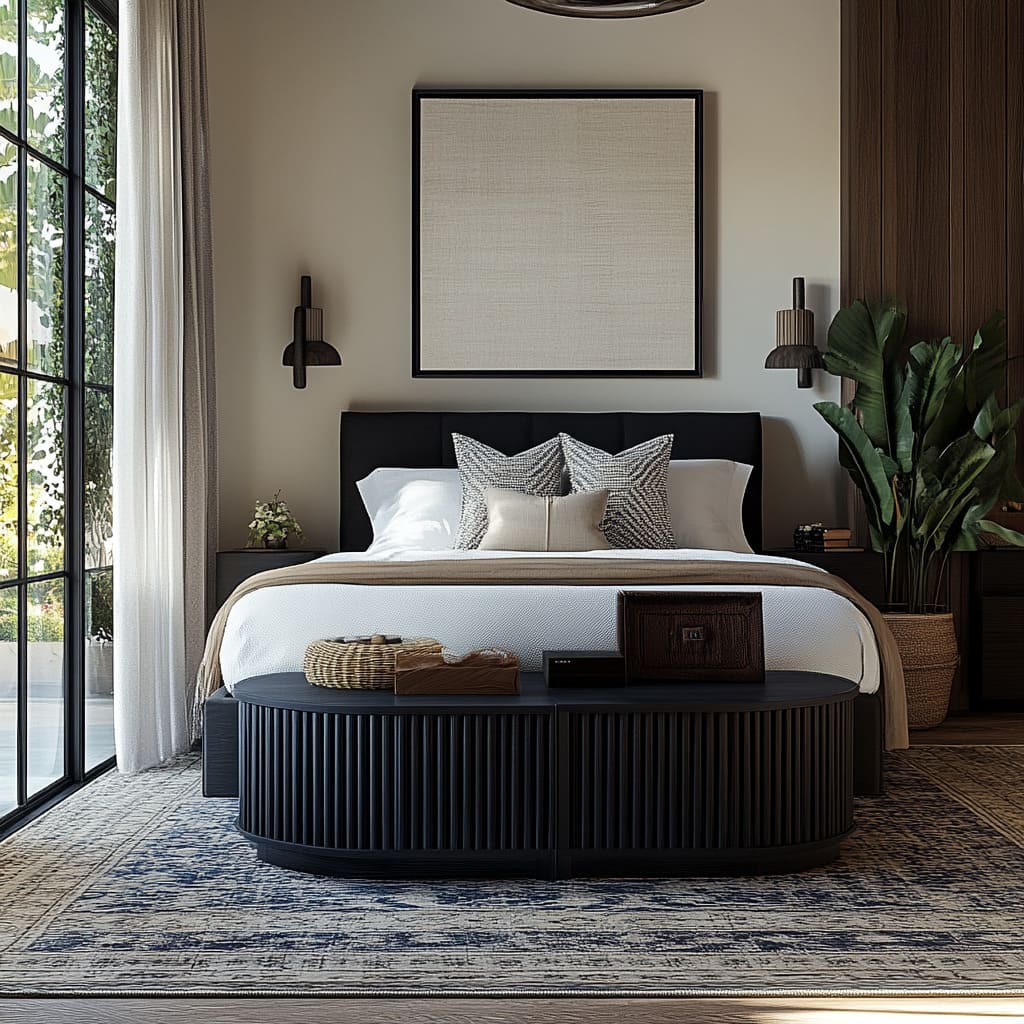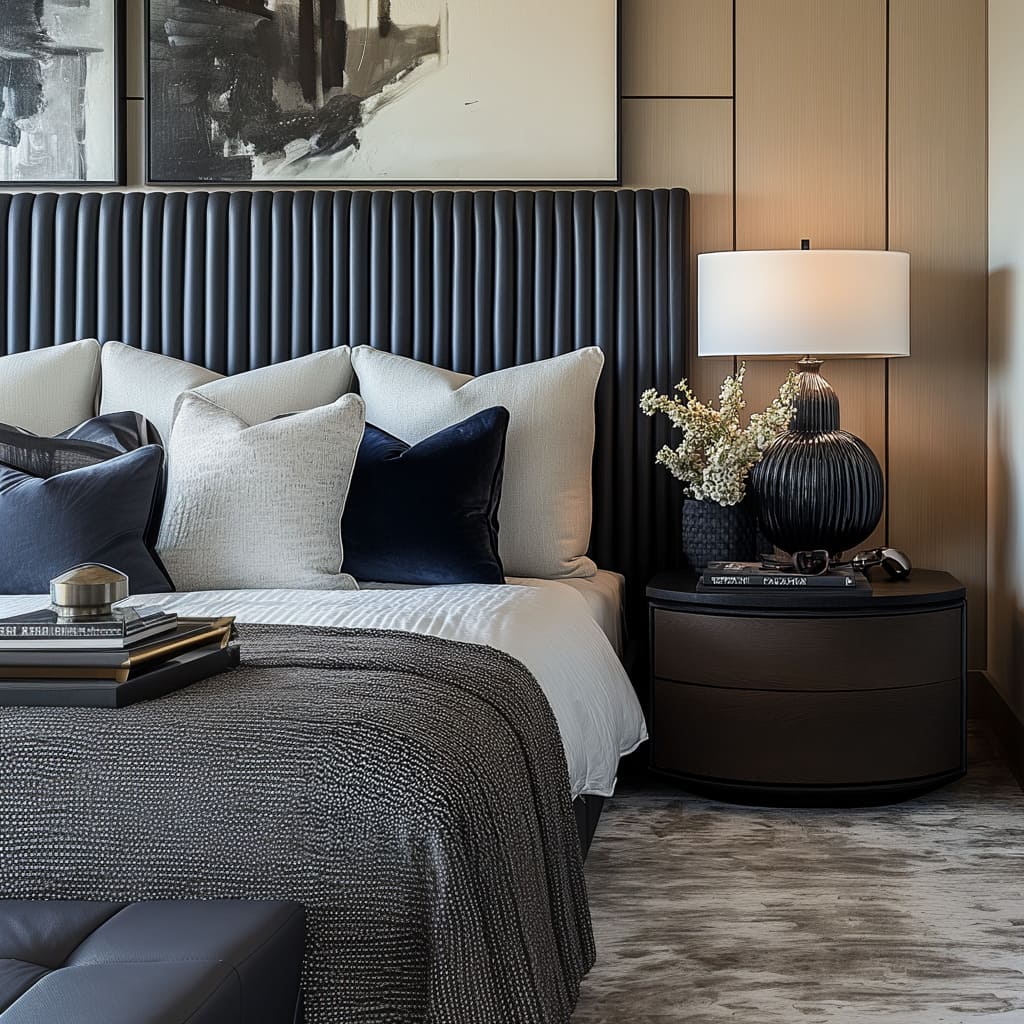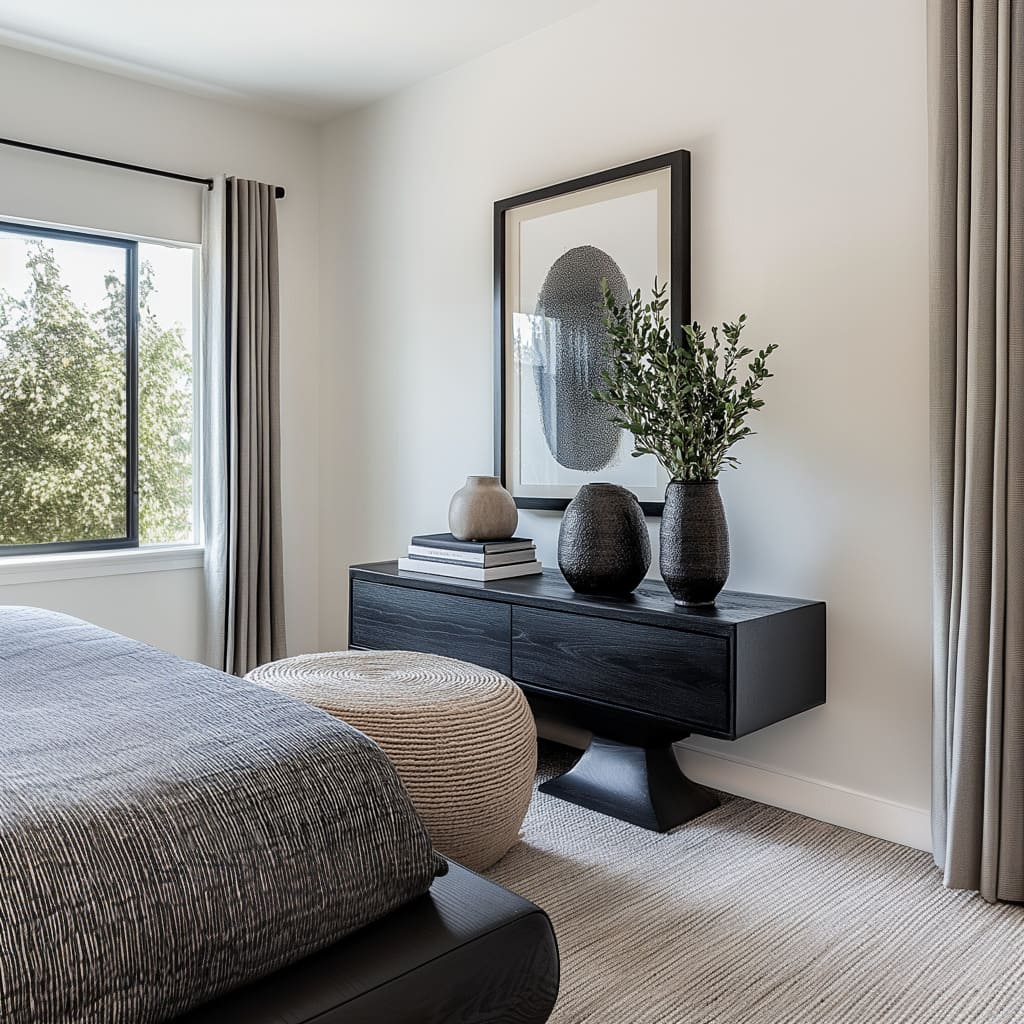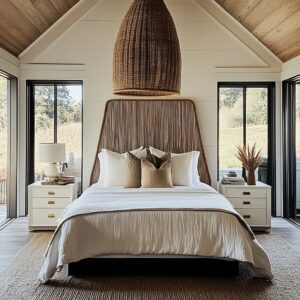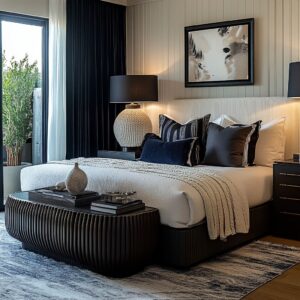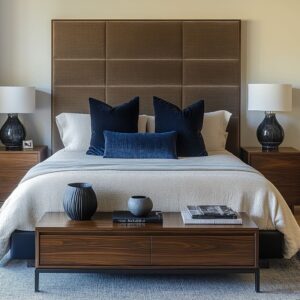Modern bedrooms are sanctuaries of rest and rejuvenation, where design elements must harmonize to create an environment that feels both luxurious and functional. The modern bedrooms present an intricate interplay of materials, colors, and styles, which, upon deeper examination, reveal design principles that go beyond the surface.
This article delves into the finer details of these interiors, uncovering insights and exploring how the deliberate choices made by designers transform these bedrooms into highly functional, visually engaging, and emotionally resonant spaces.
Bedrooms in modern design embody a careful balance of simplicity, comfort, and elegance. The styles showcased in the images reflect contemporary trends—neutral palettes, layered textures, and a strategic mix of shapes and materials.
However, a closer look reveals the hidden intricacies that elevate these rooms from beautiful spaces to thoughtfully curated environments. Each element, from the selection of bedside decor to the composition of headboards, plays a role in defining the character of these bedrooms.
Below, we examine these rooms through the lens of modern design principles, uncovering subtle relationships and unexpected insights.
The Power of Contrast and Symmetry
Symmetry as a Tool for Serenity
In modern bedrooms, symmetry emerges as a foundational principle. Whether it’s the balanced placement of bedside tables, identical lamps, or the alignment of throw pillows, symmetry creates a calming rhythm.
This order is essential in a bedroom, where the visual balance mirrors the emotional balance that the space seeks to provide.
Contrast for Depth and Energy
Contrast, often achieved through the interplay of light and dark colors, breathes energy into these spaces. For example, the pairing of black bedside tables or dark-framed mirrors with softer, neutral bedding ensures that the room feels grounded without being overwhelming.
This balance prevents monotony and introduces focal points that draw the eye without disrupting the overall harmony.
Meaningful Observations:
The strategic use of contrast highlights the value of restraint in design. By limiting the use of bold elements to a few key pieces, these bedrooms achieve a sense of drama without sacrificing their tranquil purpose.
Designers could experiment further by incorporating high-contrast materials, such as matte black fixtures against glossy surfaces, to amplify the effect.
Layering Textures for Visual and Tactile Appeal
The Role of Textiles
Layering is an essential component of modern bedroom design. A mix of soft throws, patterned cushions, and smooth duvets introduces depth and complexity.
The deliberate pairing of materials—such as wool with linen or velvet with leather—adds a tactile dimension that enhances comfort while maintaining a sophisticated aesthetic.
Natural Materials and Their Emotional Impact
The incorporation of natural textures, such as rattan benches or wooden headboards, bridges the gap between modernity and warmth. These materials evoke a sense of grounding and connection to nature, which is particularly important in a private space like a bedroom.
This subtle nod to biophilic design fosters relaxation and well-being.
Key Takeaways:
While layering is often discussed as a visual technique, its psychological impact is equally significant. The juxtaposition of soft and rough textures, such as a plush rug beneath a sleek nightstand, can evoke both comfort and stability.
This interplay could be further explored by introducing unexpected materials, such as cork or recycled fabric, which add intrigue while aligning with sustainability.
Lighting as an Emotional Anchor
Lighting Placement and Ambiance
Lighting in such bedrooms is not merely functional but emotional. The symmetry of bedside lamps, often with soft, diffused shades, creates a warm glow that enhances the room’s restful quality.
These lighting choices ensure that the bedroom transitions seamlessly from day to night, supporting relaxation at all hours.
Black Lamps as Bold Accents
In several examples, black lamps with high-gloss finishes become sculptural elements. Their reflective surfaces add a touch of glamour, while their shape and size anchor the design, preventing the neutral tones from feeling too ethereal.
Significant Findings:
The interaction between lighting and reflective surfaces, such as glossy lamps or mirrored decor, amplifies light and adds depth to the space. Designers could push this idea further by integrating smart lighting systems that adapt in color temperature throughout the day, enhancing both functionality and ambiance.
Art and Personalization as Storytelling Tools
The Role of Wall Art
Large-scale abstract art pieces featured above beds serve as focal points, unifying the design. These artworks often echo the room’s color palette, subtly reinforcing cohesion.
For instance, black-and-white pieces mirror the contrast seen in other elements, like furniture and textiles, creating a dialogue between decor and functional items.
Personalization through Accessories
Decorative objects, such as books, vases, and greenery, lend a personal touch without overcrowding the space. Their careful placement—often in odd-numbered groupings—adds visual interest and reflects the homeowner’s personality.
Substantial Point:
Art in the bedroom serves as more than decor; it sets the tone and personality of the space. Commissioning custom pieces or sourcing local artists’ work can create a sense of uniqueness and emotional connection that elevates the overall design.
Furniture as Functional Sculpture
Headboards as Statements
Headboards are central to the identity of these bedrooms. Vertical tufting, geometric grids, or sleek leather designs provide a backdrop that defines the room’s tone.
These pieces not only enhance visual interest but also contribute to comfort, acting as a cushion for reading or relaxation.
Nightstands and Their Multifunctionality
Nightstands in these spaces are both practical and aesthetic. From minimalist open shelving to intricate wood textures, they balance storage needs with visual appeal.
Their size and proportion are meticulously matched to the beds, ensuring functionality without overpowering the design.
Valuable Perspective:
Nightstands could incorporate hidden features, such as wireless charging or built-in lighting, to align with modern technology while maintaining a clean aesthetic. Exploring asymmetrical designs for headboards and nightstands could also add an element of surprise and dynamism.
Flooring and Rugs: The Subtle Foundation
Rugs as Frames
In each bedroom, rugs serve as a visual anchor, framing the bed and unifying the room. Their understated patterns and muted tones prevent them from competing with other elements while enhancing comfort underfoot.
Relevant Insights:
The choice of rug material can significantly impact both aesthetics and sustainability. Wool rugs add warmth and texture, while jute or bamboo options offer eco-friendly alternatives.
Layering smaller rugs on top of larger neutral ones can also introduce new patterns and textures without significant cost.
Beyond the Aesthetics: Practicality Meets Sustainability
Durable Materials
The use of high-quality, durable materials, such as leather and wood, ensures longevity. These choices not only align with luxury principles but also reduce waste, as they age gracefully and require less frequent replacement.
Sustainability in Design
Many bedrooms incorporate natural and eco-conscious materials, such as wooden furniture and organic textiles. This approach not only aligns with modern design trends but also resonates with the growing emphasis on sustainable living.
Remarkable Observations:
The future of modern bedroom design lies in sustainability. By integrating modular furniture or upcycled materials, designers can create adaptable spaces that evolve with changing needs while minimizing environmental impact.
Conclusion
The bedrooms analyzed in this report exemplify the best of modern design—thoughtful, balanced, and highly functional. Beyond their visual appeal, these spaces reflect a deeper understanding of how design elements interact to create environments that support both rest and self-expression.
From the subtle interplay of contrast and symmetry to the deliberate layering of textures and the emotional power of lighting, every detail contributes to a cohesive whole.
By exploring non-trivial combinations and unexpected insights, such as the psychological impact of textures or the storytelling potential of art, designers can push the boundaries of what a modern bedroom can be. These spaces are more than just rooms—they are carefully curated experiences that blend beauty, functionality, and personal connection.
As trends evolve, the principles uncovered here will remain timeless, offering inspiration for future designs that are as meaningful as they are beautiful.
